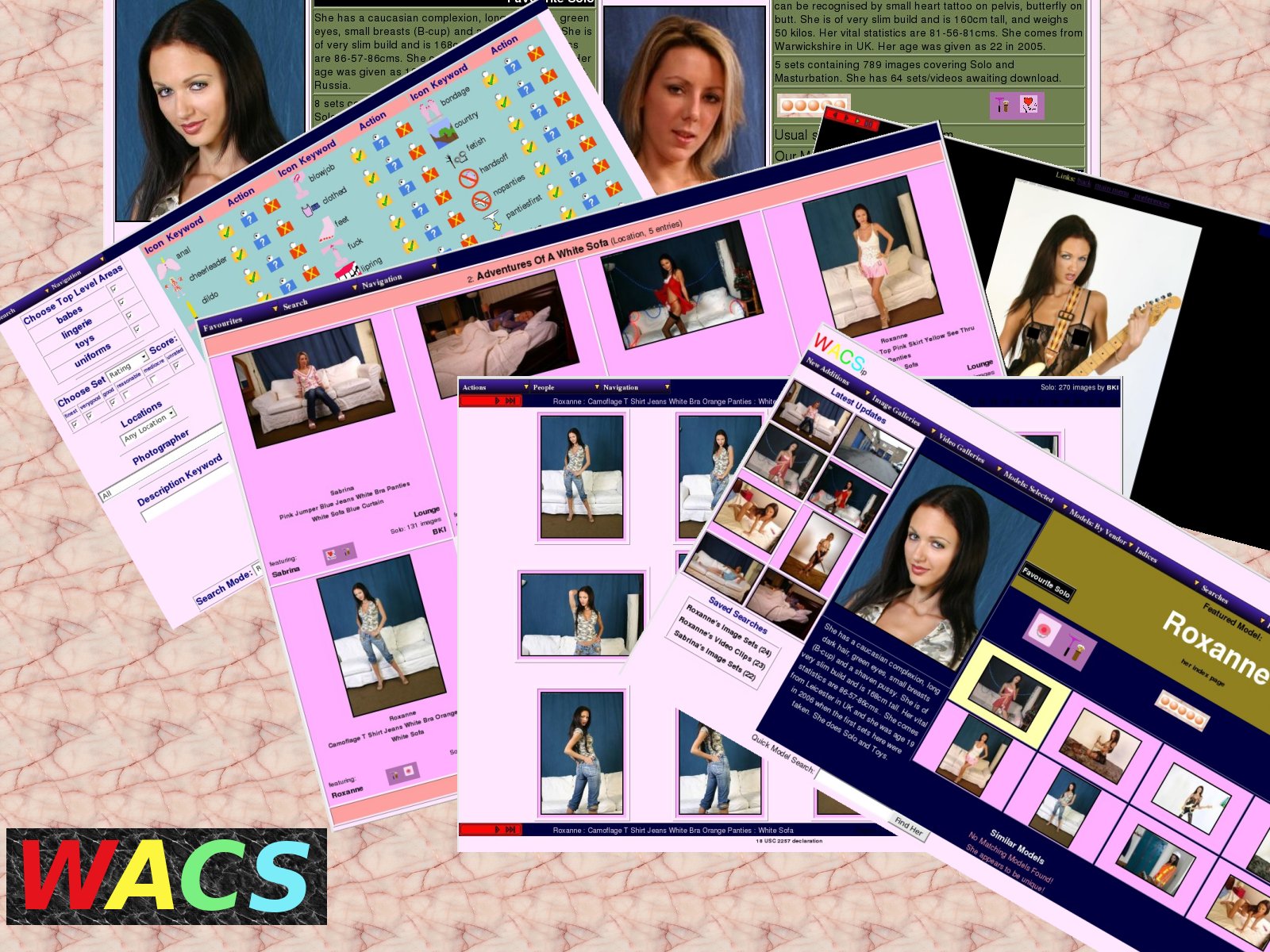 |
Second Edition
for WACS 0.8.1
Copyright © 2006, 2007, 2008 B King
22nd August 2008
Abstract
WACS is a tool for building Adult Web Sites; it is equally suitable for managing a private collection or building a commercial web site. It has many best of breed features including dynamic filtering, model catalogs, automatic download and powerful search engine. It comes with a powerful API (application programming interface) implemented in both Perl and PHP5 languages to allow web developers to leverage it's facilities from their own programs.
This book describes the application programming interface provided by WACS, and how to utilise it from perl and Php languages. It provides an extensive introductory tutorial with a large number of worked example programs as well as a complete API reference manual. Additionally it provides a schema reference for the WACS database tables as understanding the fields available to you is central to writing programs that utilitise it. The intended audience is web developers and WACS site managers who wish to tailor an existing WACS installation to meet their precise requirements; people merely wishing to use or manage an existing WACS installation may well find the default configurations provided suffice.
Table of Contents
- I. WACS API Programming Tutorial
- II. WACS API Programming Reference
- III. WACS Database Schema
- Index
List of Tables
- 1. The Key WACS Modules
- 6.1. Function Summary: Core Module
- 7.1. Function Summary: User Interface Module
- 8.1. Function Summary: Standard Components Module
- 9.1. Function Summary: Identification Module
- 10.1. stype: Type of Set: defined values
- 10.2. sstatus: Status of Set: defined values
- 10.3. sauto: Automatic Update of Set Allowed?: defined values
- 10.4. srating: Overall Rating For The Set: defined values
- 10.5. stechqual: Technical Quality Rating For The Set: defined values
- 10.6. svariety: Unusualness Rating For The Set: defined values
- 10.7. sformat: Format of the File(s) In The Set: defined values
- 10.8. sidlogo: Presence of Burnt-in Logo: defined values
- 10.9. serrors: Presence of Known Errors: defined values
- 10.10. scatflag: Generalised type of the set: defined values
- 10.11. slocation: generalised description of locations: recommended values
- 10.12. suscattr: how to generate the 18 USC 2257 declaration: defined values
- 11.1. astatus: association status: defined values
- 12.1. istatus: idmap status: defined values
- 12.2. iactive: model activity status as this identity: defined values
- 12.3. isite: Some recommended site abbrievations: recommended values
- 13.1. mstatus: model record status: defined values
- 13.2. mrating: model rating: defined values
- 13.3. mpussy: model's normal pubic hair style: defined values
- 13.4. mflag: special marking flag for models: defined values
- 13.5. model activites flags: defined values
- 13.6. mcstatus: accuracy of home country field: defined values
- 13.7. mrace: race of the model: defined values
- 13.8. mbuild: body type of the model: defined values
- 13.9. vital statistics: meanings
- 14.1. dstatus: download status: defined values
- 14.2. dtype: download set type: defined values
- 14.3. dsetflag: Suggested value for scatflag based on parsing result
- 15.1. pgender: gender of the photographer: defined values
- 15.2. pregion: geographical location of the photographer: defined values
- 15.3. prating: overall rating of photographer: defined values
- 15.4. phardness: rating of how explicit this photographer can be: defined values
- 15.5. photographer activites covered flags: defined values
- 15.6. photographer technologies used flags: defined values
- 16.1. tstatus: tag entry status: defined values
- 16.2. tflag: tag content type status: defined values
- 17.1. vcurrent: vendor existance status: defined values
- 17.2. vshow: vendor index inclusion status: defined values
- 17.3. vmdiruse et al: vendor URL auto-usuability status: defined values
- 18.1. cflag: connection type: defined values
- 18.2. cstatus: connection entry status: defined values
- 19.1. kflag: active entry status: defined values
List of Examples
- 2.1. WACS Module Import
- 2.2. Config and Security
- 2.3. Database Connection Initialisation
- 2.4. Database Query
- 2.5. Outputing The List
- 2.6. Php: Complete Simple Program
- 2.7. Perl: Complete Simple Program
- 3.1. Modified Output Loop with Icon Code
- 3.2. Modified SQL command for more Model Info
- 3.3. New version of the loop using tables
- 3.4. Adding Model Information
- 3.5. Adding A Rating Icon
- 3.6. Calling
dberrorfor better error reporting - 4.1. The Basic SetDisp Program
- 4.2. Adding A Set Icon
- 4.3. Making Camel-Style Text Readable
- 4.4. Modified Icon Cell
- 4.5. getmodel Subroutine
- 4.6. Calling The
getmodelFunction - 5.1. WacsUI initialisation
- 5.2. Using WacsUI: describeher
- 5.3. Using AddKeyIcons